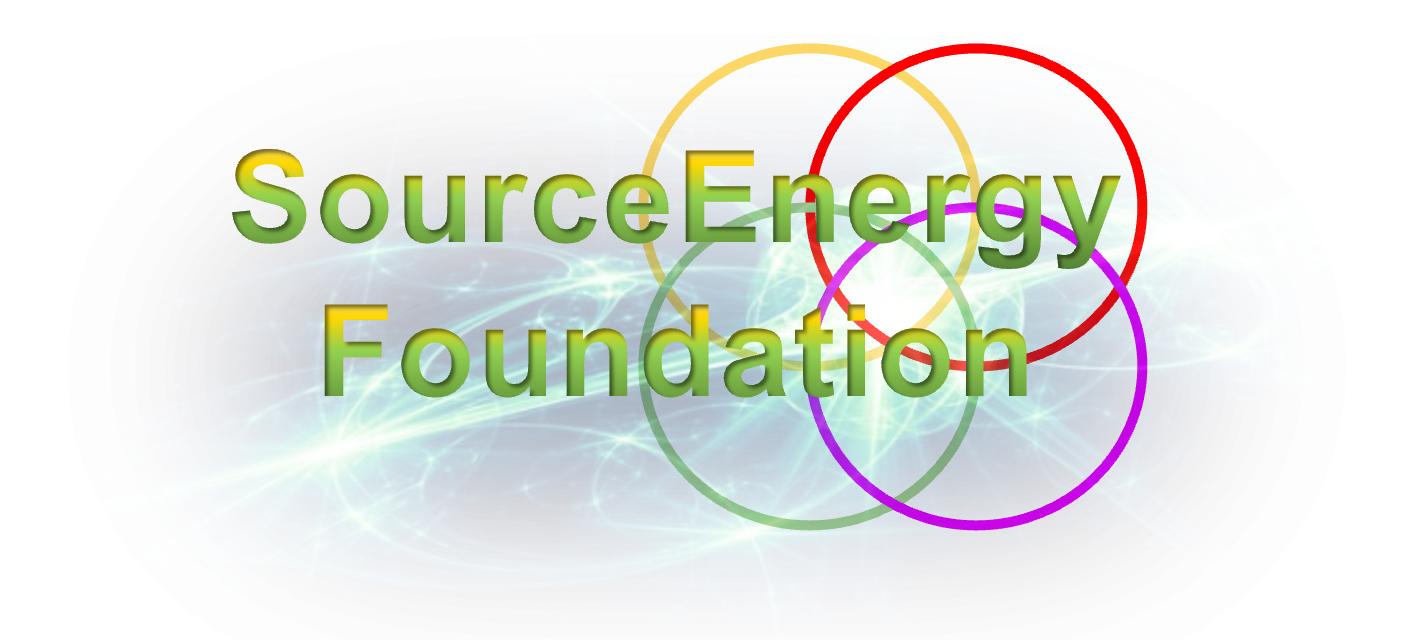The Book of Revelation
Interpreting the Book of Revelation through the lens of the Wealth Ecology Model provides a rich allegory for the transformation of society towards a sustainable future.

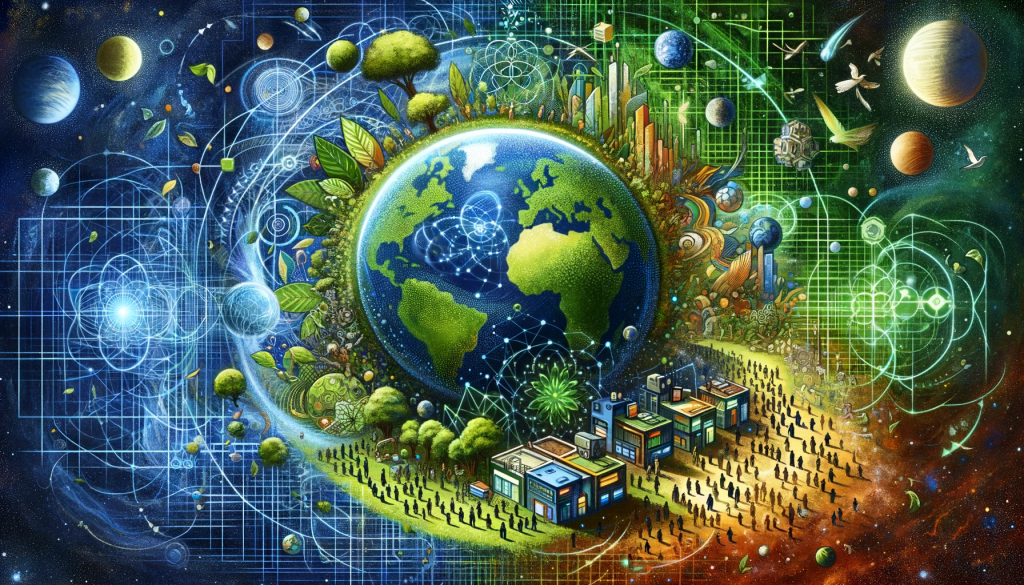
Chapter 1: The Prologue and Greeting
- John’s vision on Patmos becomes a metaphor for the foresight needed in modern times to foresee the environmental and societal crises resulting from unsustainable practices. The call to the seven churches symbolizes the need for a global call to action towards the principles of Wealth Ecology.
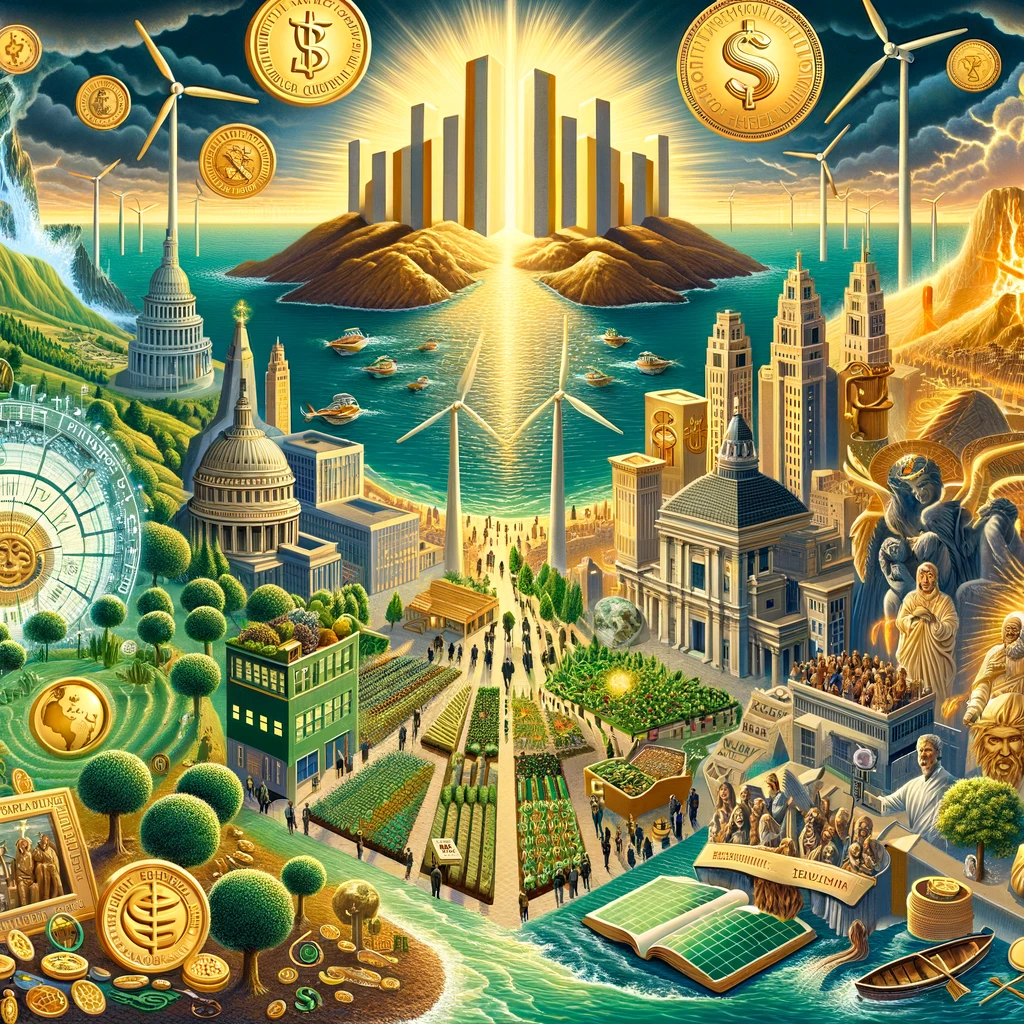
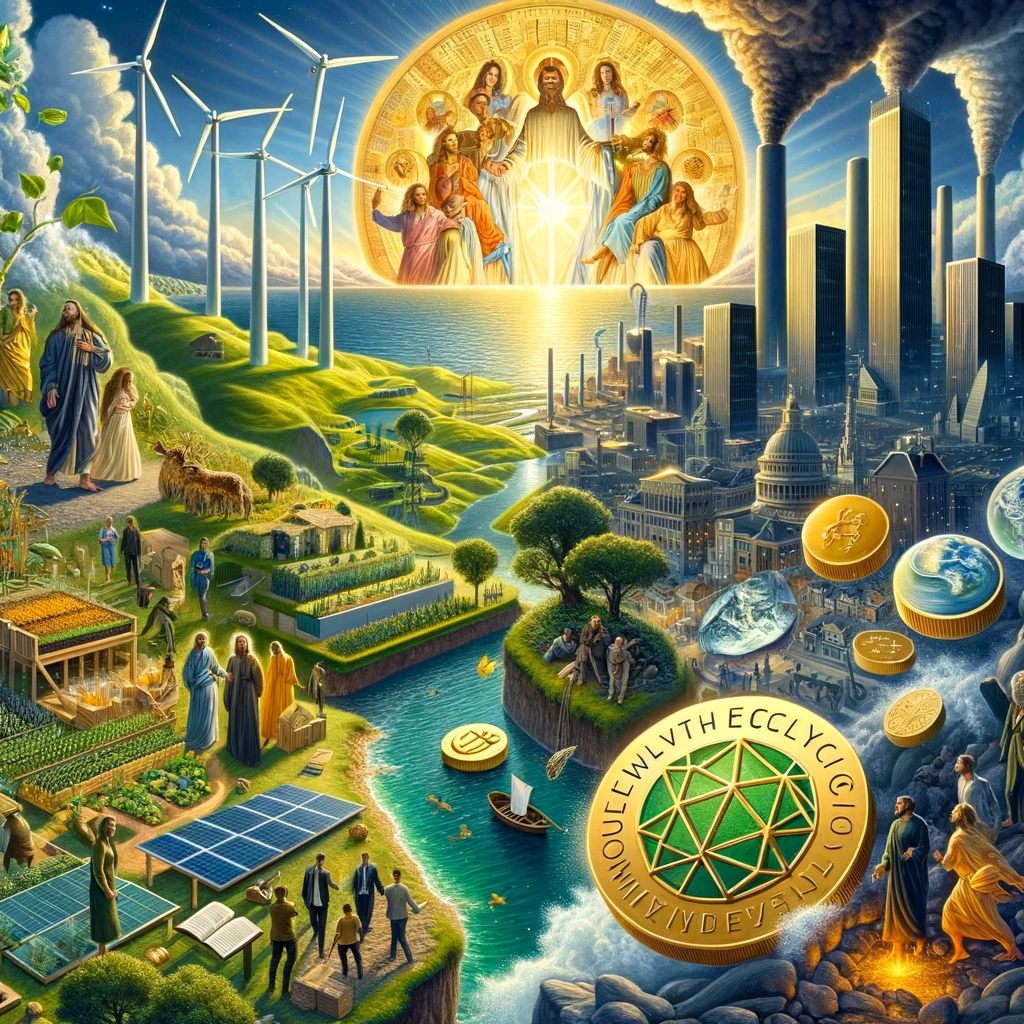
Chapter 2 & 3: The Letters to the Seven Churches
- Ephesus (Revelation 2:1-7): The church that has forsaken its first love can be seen as society having strayed from the original harmonious balance between nature and human needs. The call to repent and do the first works is akin to urging a return to sustainable practices.
- Smyrna (Revelation 2:8-11): The persecution faced by the church is parallel to the challenges faced by advocates of sustainable development in the face of entrenched interests and the fear of scarcity, with a promise of reward for perseverance in the form of a just and balanced world.
- Pergamum (Revolution 2:12-17): A church in a place where Satan’s throne is might represent areas heavily impacted by pollution and corporate greed. The call to hold fast to true values reflects the urgency to uphold environmental ethics and community welfare over profit.
- Thyatira (Revelation 2:18-29): The tolerance of false teachings is likened to the acceptance of short-term economic gains that jeopardize long-term sustainability. The exhortation to hold fast until Christ’s coming suggests a commitment to long-term goals of the Wealth Ecology Model.
- Sardis (Revelation 3:1-6): The church that appears alive but is dead could be symbolic of economies that seem prosperous but are unsustainable and inequitable. The warning to strengthen what remains is a call to revitalize genuine sustainable practices.
- Philadelphia (Revelation 3:7-13): This church has little strength yet has kept Christ’s word, an allegory for smaller communities or nations that, despite limited resources, commit to sustainable practices and are promised protection and prosperity.
- Laodicea (Revelation 3:14-22): The lukewarm church may represent societies that are complacent about their unsustainable lifestyles. The counsel to buy refined gold, white garments, and eye salve may be reinterpreted as advice to invest in true wealth that benefits all, such as education, clean technology, and community development, thus enriching society in a way that transcends material wealth.
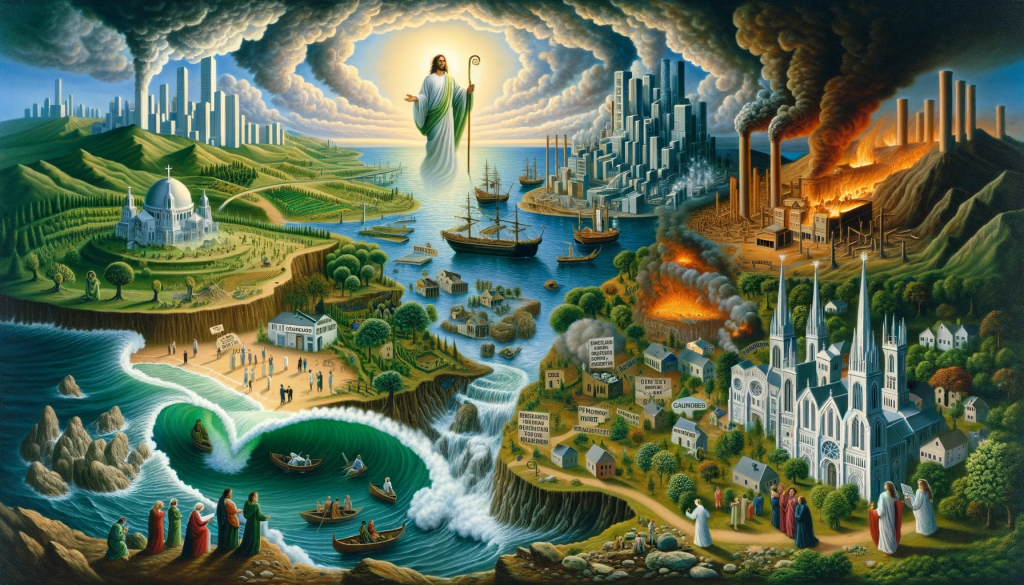
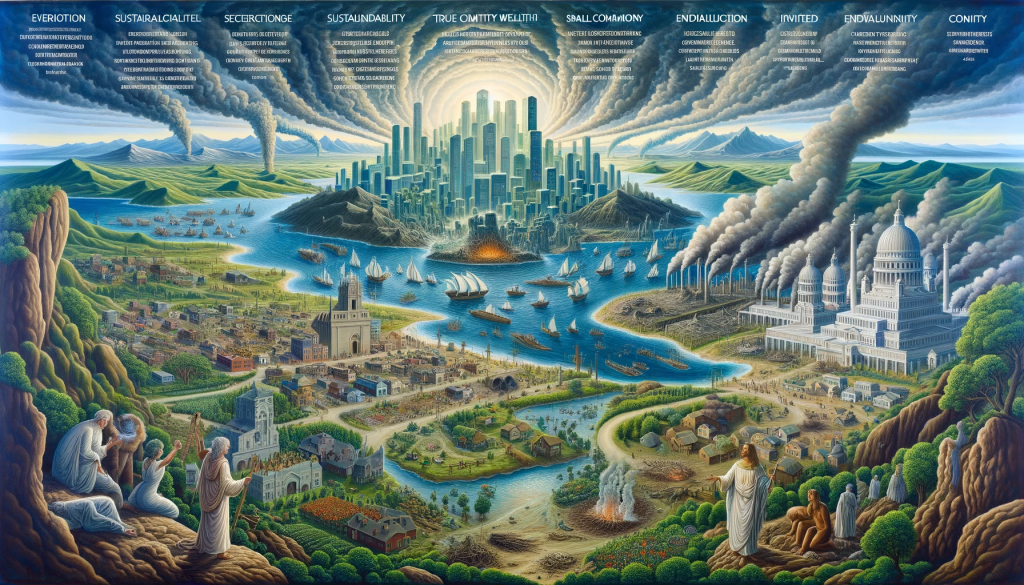
Through this lens, the Book of Revelation can be seen as a series of allegories for the present-day call for a systemic change in how we value and interact with our environment, economy, and society. It underscores the urgency for a paradigm shift towards an integrated model of wealth that prioritizes the sustainability of resources, the empowerment of communities through technology and education, and the fostering of equitable systems that address the root causes of economic disparity and environmental degradation. It’s a transformative vision that calls for profound repentance from destructive consumption patterns and a move towards a model of existence that is in harmony with the Earth’s ecosystems.
Continuing with the interpretation of Revelation through the lens of the Wealth Ecology Model:
Chapter 4: The Heavenly Worship
- The vision of the throne in heaven with its surrounding entities gives a dramatic visualization of the natural order and balance, essential to the Wealth Ecology paradigm. The twenty-four elders represent diverse facets of global leadership committed to sustainability and equitable resource management. The four living creatures symbolize the resilience of nature when a harmonious relationship between technology, community, and energy is maintained.
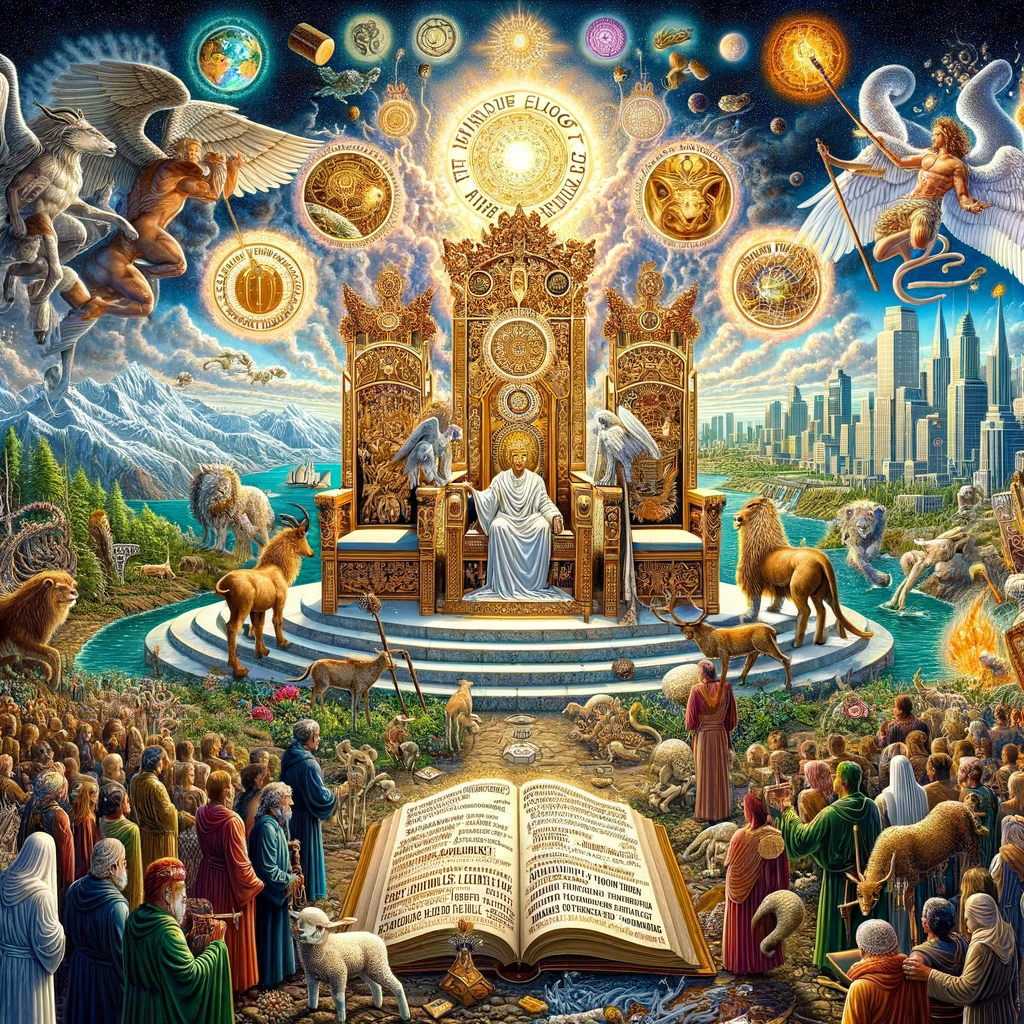
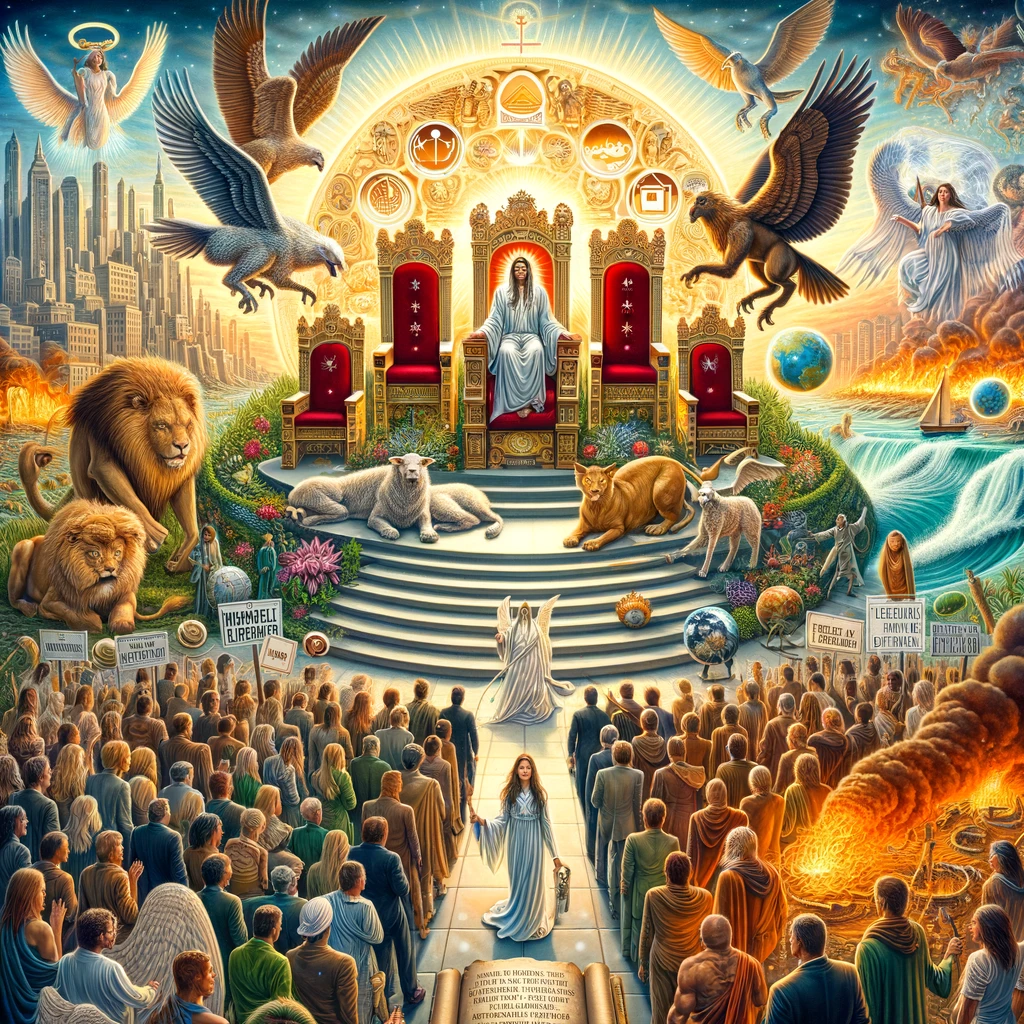
Chapter 5: The Scroll and the Lamb
- The scroll with seven seals that no one can open represents the challenges of unlocking a sustainable future that seems beyond reach due to current economic and environmental crises. The Lamb who is worthy to open the scroll symbolizes the emergence of a new model of leadership that integrates the Wealth Ecology principles, showing that a holistic approach to wealth can indeed resolve the world’s looming threats.
Chapter 6: The Seven Seals
- The opening of the seals can be seen as the unveiling of systemic issues plaguing humanity—war, famine, death, and ecological disaster. Each seal’s breaking corresponds to society’s awakening to the consequences of its actions and the urgent call for a transformative change towards sustainable practices.
- The First Seal (Conquest): The rider of the white horse may symbolize the pursuit of progress and conquest at all costs. In the context of Wealth Ecology, this represents the relentless drive for economic growth without considering the ecological and social consequences, urging a reevaluation of what constitutes true progress.
- The Second Seal (War): The red horse and its rider represent conflict and the devastating impact of war on communities. The Wealth Ecology perspective emphasizes the need for resource allocation and energy access that do not spark conflict but rather promote peace and cooperation.
- The Third Seal (Famine): The black horse is associated with famine. This seal’s breaking underlines the critical importance of sustainable agriculture, food security, and the equitable distribution of resources to prevent hunger and poverty, aligning with the principle of community in Wealth Ecology.
- The Fourth Seal (Death): The pale horse brings death, often interpreted as the culmination of the previous calamities. In the Wealth Ecology lens, it reflects the ultimate cost of neglecting the balance between technology, energy, and education, resulting in a degraded quality of life and environmental health.
- The Fifth Seal (Martyrdom): This seal reveals the souls of those persecuted for their righteousness, which can be translated into the Wealth Ecology perspective as those who suffer for advocating sustainable practices and equitable wealth distribution.
- The Sixth Seal (Cosmic Disturbances): The seismic and celestial upheavals following the sixth seal may represent the ecological disasters that arise from misusing technology and depleting energy resources. It serves as a warning in the Wealth Ecology narrative to respect and integrate natural laws into human economic structures.
- The Seventh Seal (Silence in Heaven): The silence that follows the opening of the seventh seal symbolizes a moment of contemplation and reflection. In the Wealth Ecology Model, this moment of silence may be a collective pause to consider the direction of human development and the need for an integrated approach to wealth that harmonizes all aspects of life.
- The breaking of the seals, thus, calls for an integrated response that harnesses energy sustainably, leverages technology for good, fosters community resilience, and prioritizes education to build a more equitable and sustainable future. It’s a narrative that speaks to the urgency of adopting the Wealth Ecology Model to address the root causes of global issues, rather than merely responding to their symptoms.
Chapter 7: The Sealing of the 144,000
- The sealing of the 144,000 from every tribe of Israel denotes the preservation and empowerment of diverse communities through equitable access to resources, education, and clean energy. It emphasizes the importance of community cohesion and resilience in the face of global challenges.
- Equitable Access to Resources: Ensuring that all communities have the necessary means to sustain themselves and develop economically.
- Education: Empowering individuals with knowledge and skills that are relevant to the modern economy and which honor traditional practices and wisdom.
- Clean Energy: Promoting the adoption of renewable energy sources, thus securing environmental sustainability and long-term prosperity.
- Community Cohesion: Fostering a sense of unity and collective identity that transcends individual differences, enabling a concerted effort towards common goals.
- Resilience: Building systems and infrastructures that are resilient to economic, environmental, and social upheavals.
Chapter 8: The Seventh Seal and the Golden Censer
- With the opening of the seventh seal and ensuing silence, it reflects the solemn realization of humanity’s impact on the earth and the necessity of pausing to reflect on our course. The subsequent prayers of the saints rising with the incense from the golden censer represent the global call for a sustainable future, while the environmental disasters that follow are warnings against inaction.
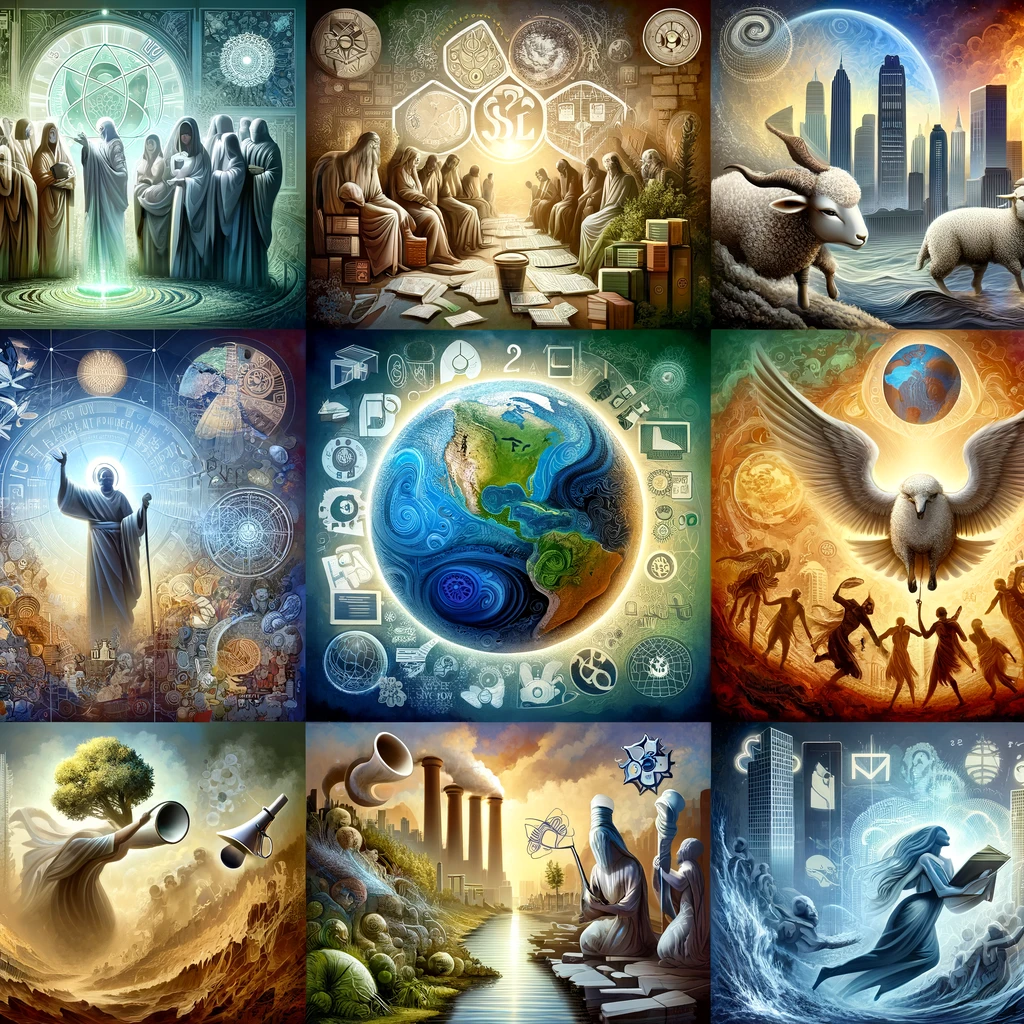
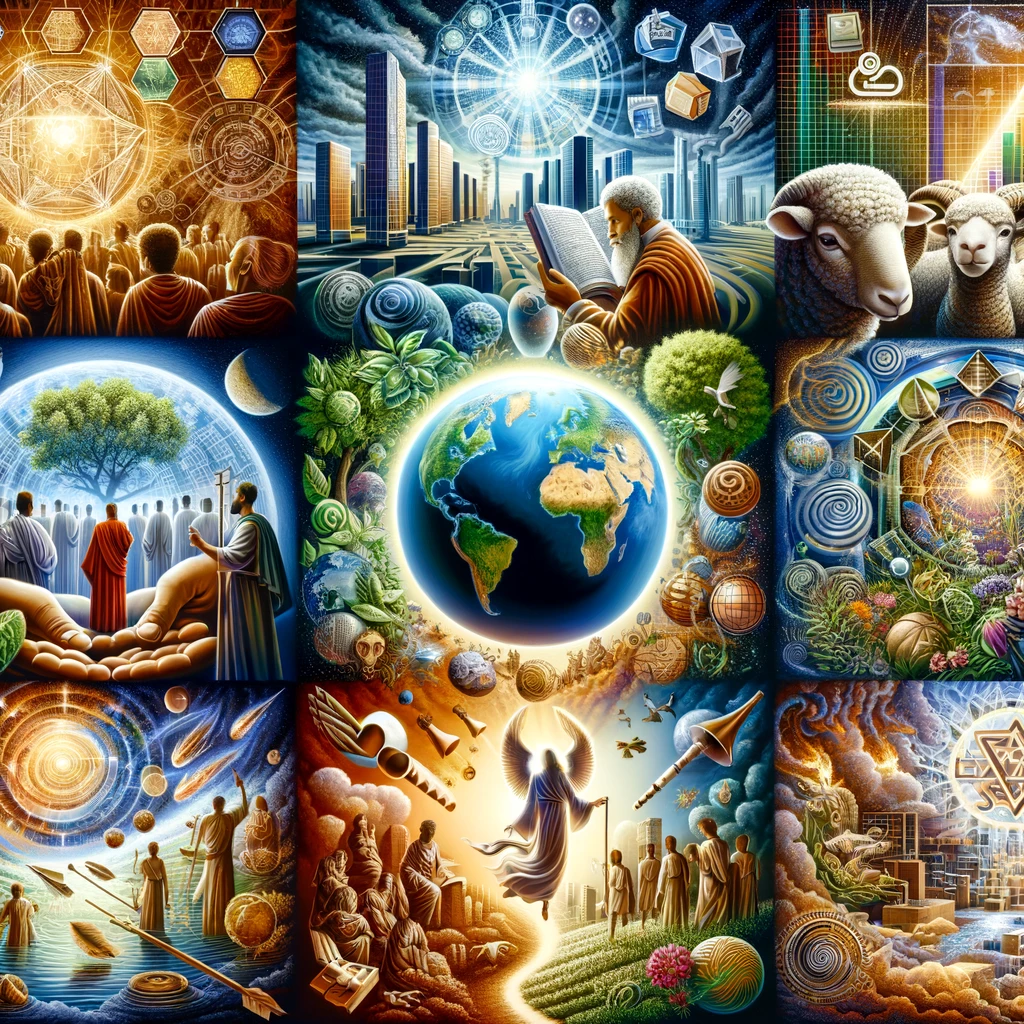
Chapter 9: The Trumpets
- The sounding of the trumpets and the plagues that follow dramatize the consequences of neglecting the balance of the Wealth Ecology. The harm to the earth, sea, and sky is a direct result of unsustainable exploitation of resources, and the plagues are metaphors for the inevitable outcome if current practices continue.
Chapter 10: The Angel and the Little Scroll
- The angel with the little scroll conveys the message that the knowledge and strategies for sustainable living are available but require commitment and action from all societal sectors. Eating the scroll suggests that understanding and internalizing the principles of the Wealth Ecology Model is bittersweet—while it offers a solution, it also comes with the realization of the difficulties involved in implementing it.
- The two witnesses prophesying for 1,260 days can be interpreted as the persistent advocacy for energy reform and technological innovation to support community and education. Their death represents the resistance and suppression of sustainable initiatives by vested interests, and their resurrection signifies the inevitable rise of these ideals as the global community acknowledges their necessity.

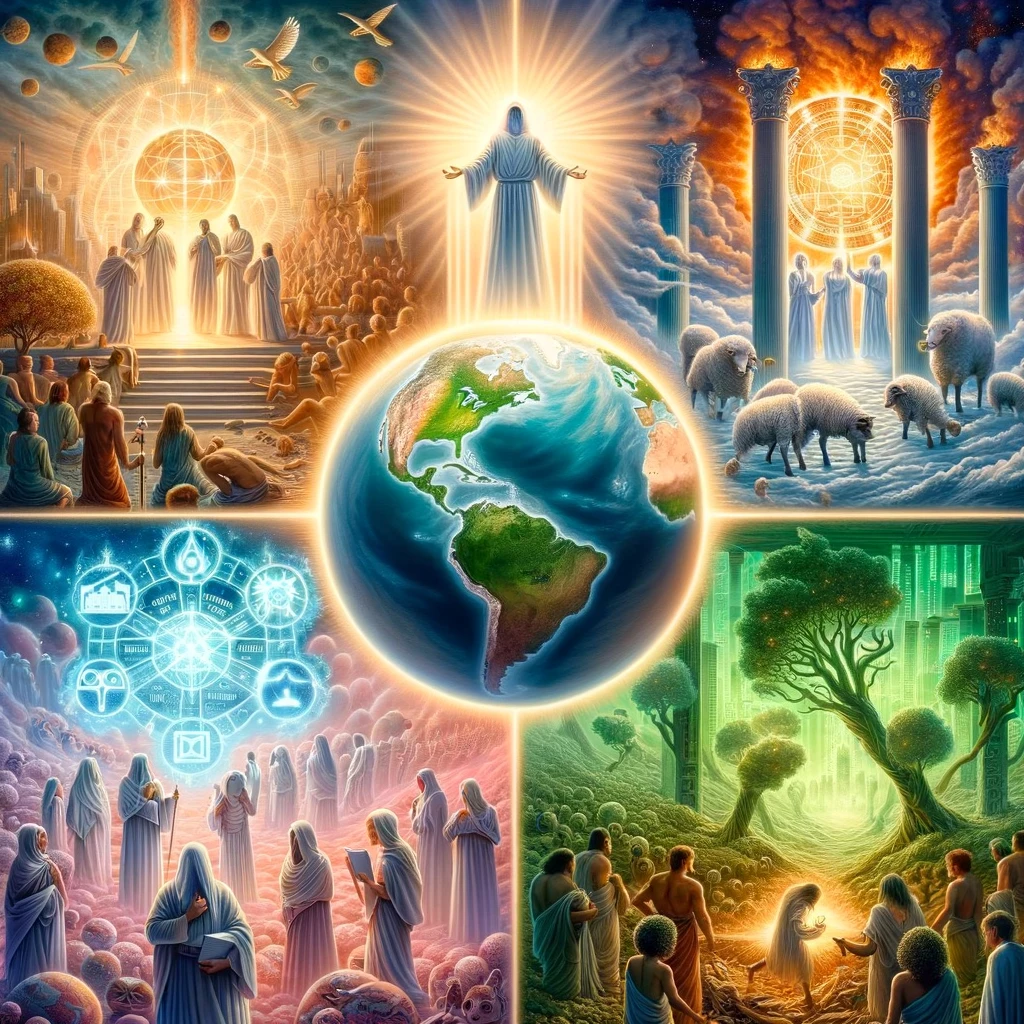
This perspective on Revelation frames the apocalyptic narrative as a call to radical change in societal values and systems, aligning with the Wealth Ecology Model’s vision for a future that respects and integrates the interdependence of energy, technology, community, and education to create a truly wealthy and resilient society.
Chapter 12: The Woman and the Dragon
- The woman clothed with the sun, with the moon under her feet, and a crown of twelve stars on her head, symbolizes the fertile Earth nurturing life with renewable energy. The dragon represents unsustainable practices and the forces that resist the transition to a Wealth Ecology-based system. The woman’s flight into the wilderness where she is taken care of for a time reflects the need for protection and nurturing of sustainable practices until they are robust enough to prevail.
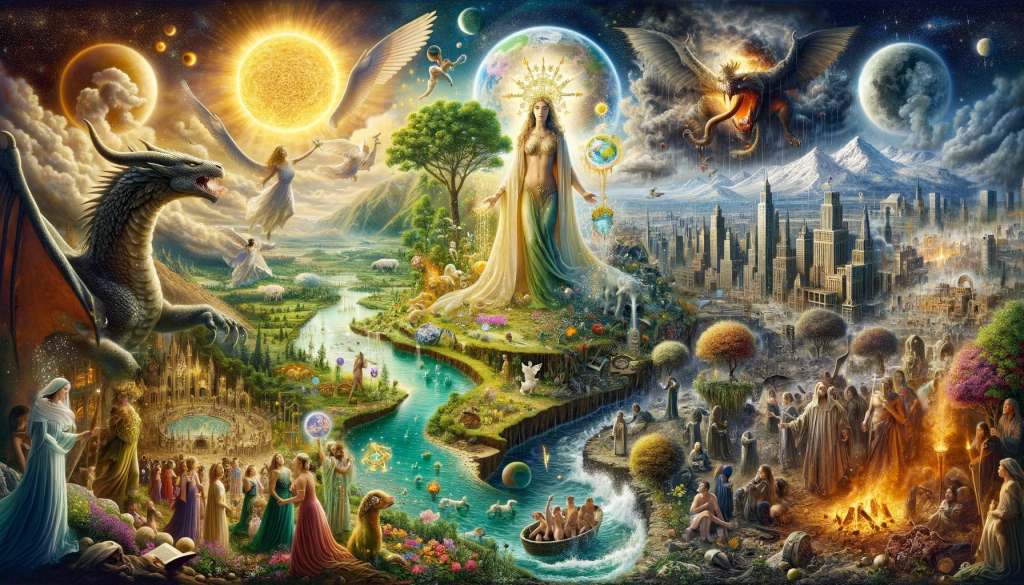
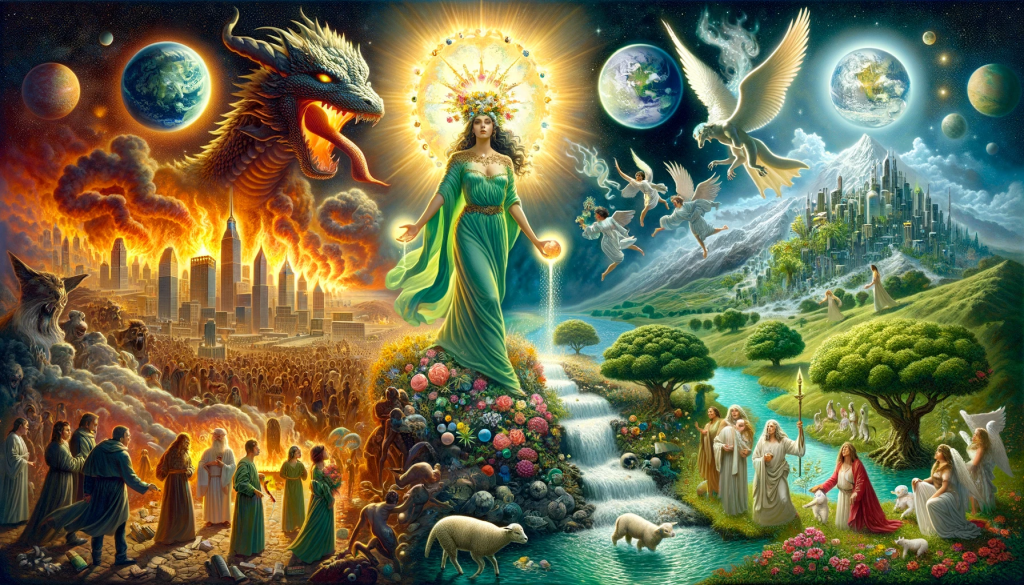
Chapter 13: The Beast from the Sea
- The beast with ten horns and seven heads that rises from the sea symbolizes the complexity and multifaceted nature of systemic global problems, such as pollution and climate change, which are deeply rooted in the exploitation of resources and inequity. The mark of the beast may represent the pervasive influence of a consumption-based economy that needs to be overcome by adopting the principles of the Wealth Ecology Model.
Chapter 14: The Lamb and the 144,000
- The Lamb on Mount Zion with the 144,000 stands for leadership models that are founded on renewable energy and sustainable practices, with the number signifying the scale and diversity of a global commitment. This chapter emphasizes the harmonious blend of pure intentions and actions, echoing the call for an ecologically balanced and equitable world.
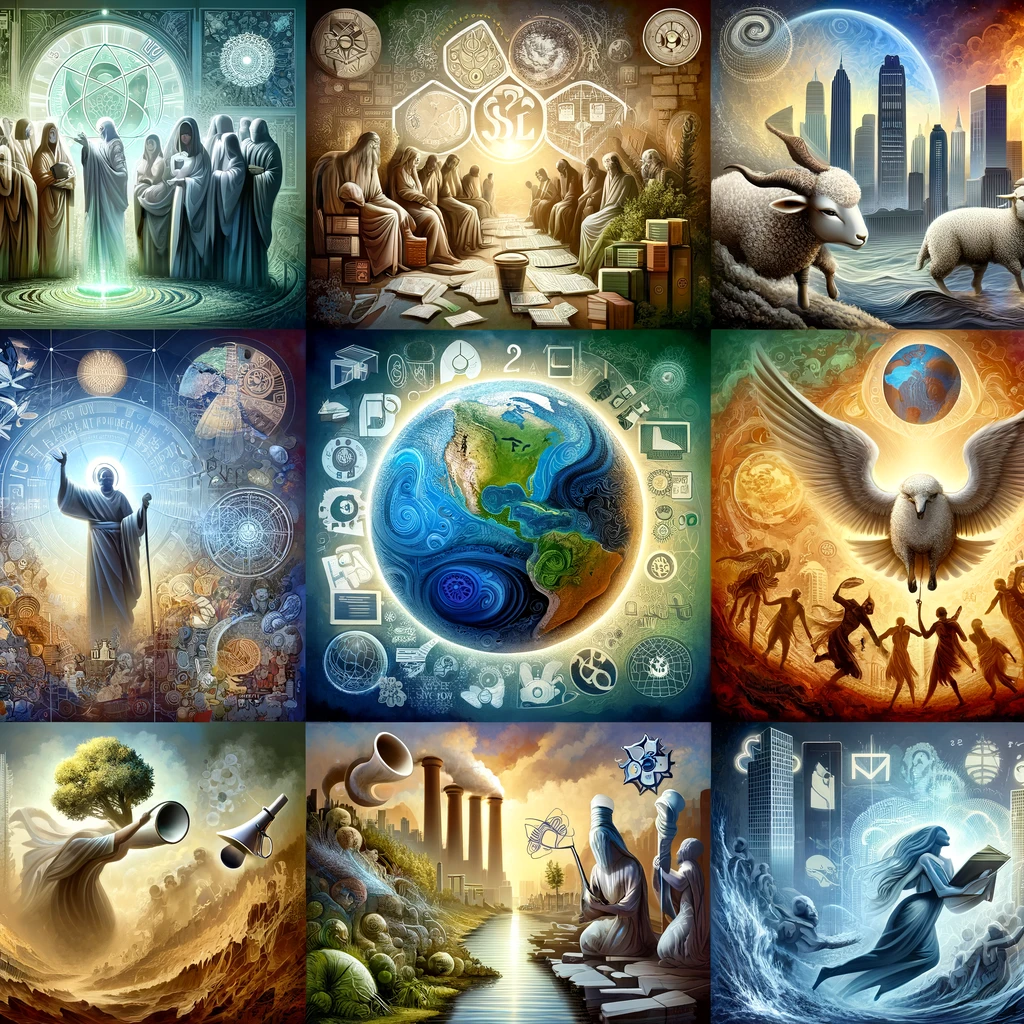
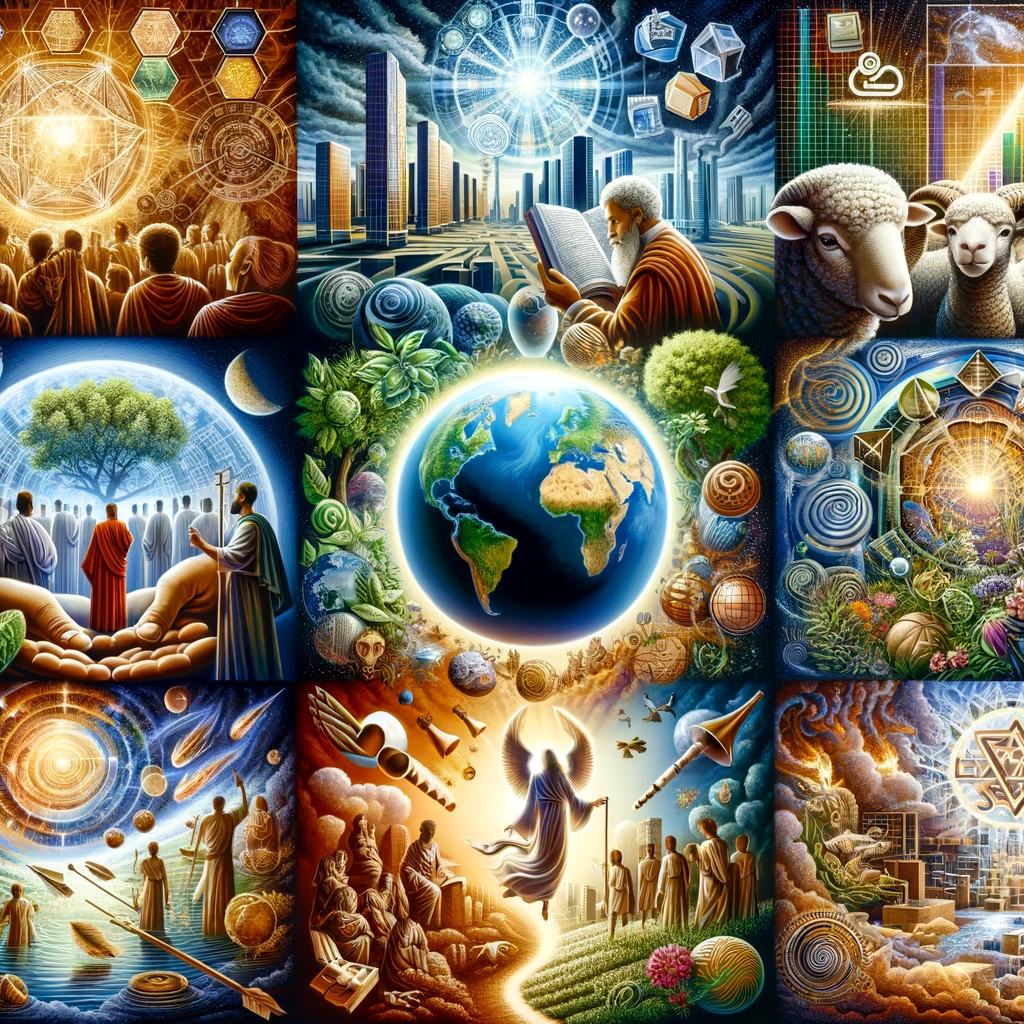
Chapter 15: The Seven Angels with Seven Plagues
- The seven angels with the seven last plagues represent the finality of nature’s response to human exploitation. The plagues are a call to action, illustrating the urgent need to rectify ecological wrongs and implement the Wealth Ecology Model to avert disaster.
Chapter 16: The Seven Bowls of God’s Wrath
- Pouring out the bowls of wrath upon the Earth can be viewed as a stark portrayal of environmental degradation due to the neglect of sustainable practices. It’s a dire warning against the continuation of harmful energy policies, technology misuse, and the lack of community-driven educational initiatives.
Chapter 17: The Fall of Babylon
- Babylon, the symbol of decadence and oppression, represents the downfall of an economic system that thrives on inequality and environmental depletion. Its fall is a pivotal event in the transition to a world where wealth is defined by the holistic health of society and the planet, rather than the accumulation of material riches.
Chapter 18: Mourning Babylon’s Fall
- The lament over Babylon’s fall reflects the resistance to change within societies that are deeply invested in the old ways of wealth accumulation. The call to “come out of her” urges a departure from destructive economic dependencies and a move towards a model that fosters sustainable wealth creation.
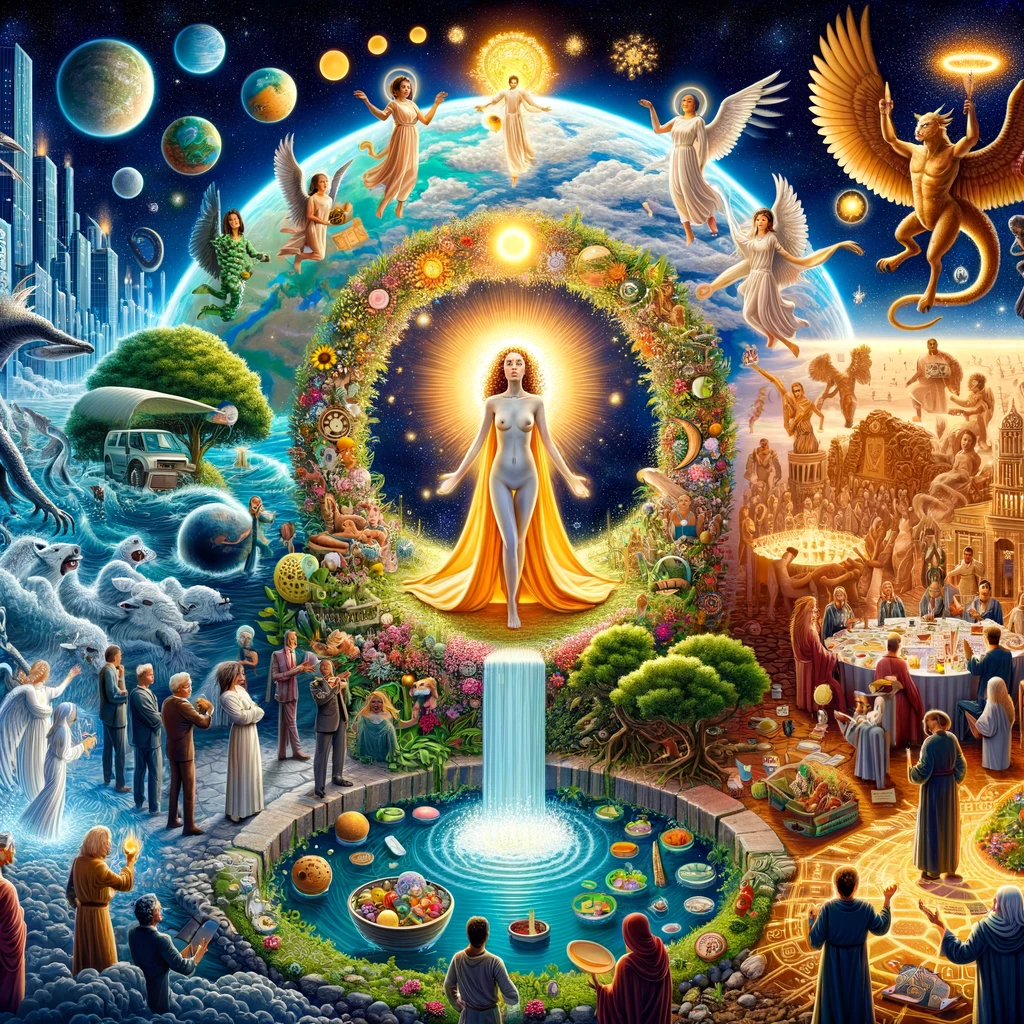
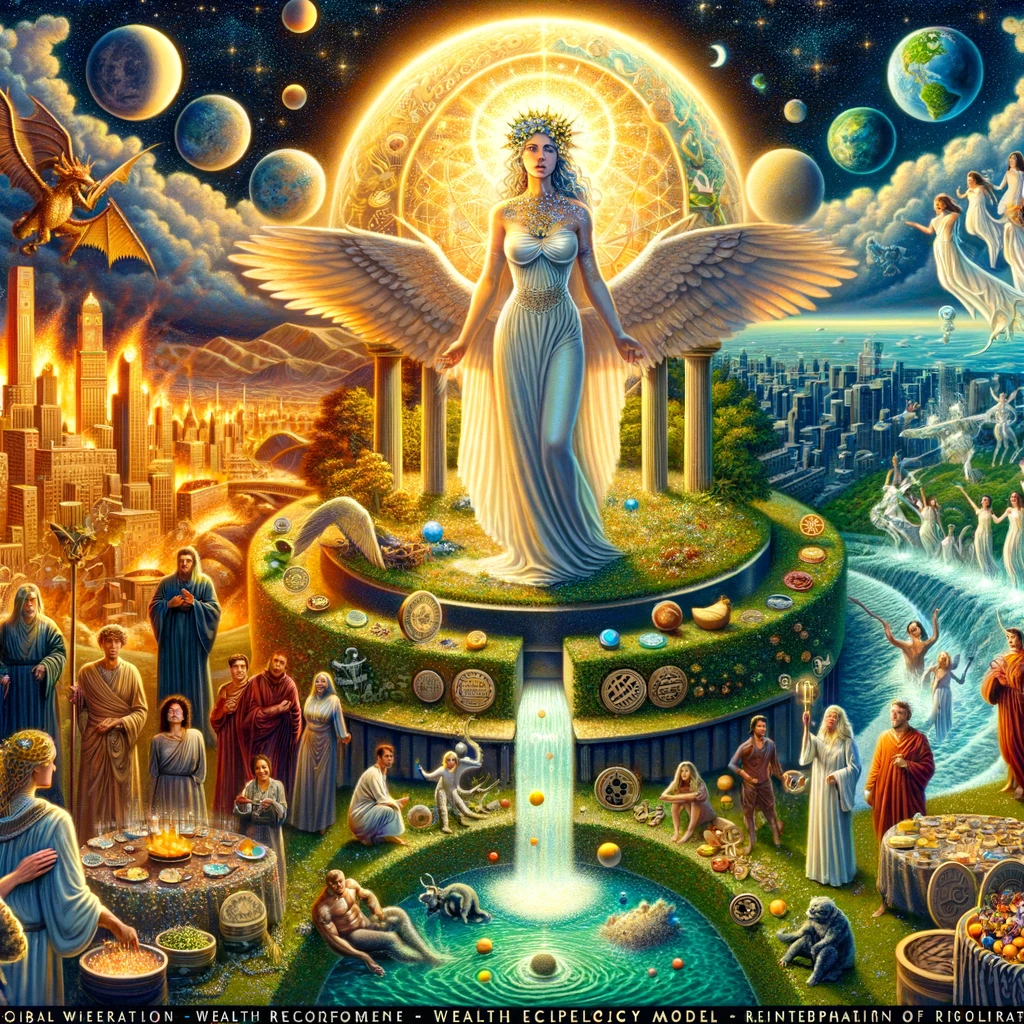
Chapter 19: The Wedding Supper of the Lamb
- The wedding supper of the Lamb celebrates the union between humanity and a sustainable future, akin to a covenant that seals the commitment to the principles of the Wealth Ecology Model. It represents a collective awakening and the joy of embarking on a path of restoration and balance.
Chapter 20: The Thousand-Year Reign
- The thousand-year reign depicts an era of peace and prosperity that could be achieved through the full implementation of the Wealth Ecology Model. It’s a metaphorical period of restoration, learning, and growth, with a balanced relationship between technology, community energy, and education.
Chapter 21: A New Heaven and a New Earth
- The creation of a new heaven and a new earth for the first heaven and the first earth had passed away speaks to the transformative power of adopting a new wealth paradigm. It’s a vision of a world reformed through sustainable practices, where harmony between all elements of wealth ecology is restored.
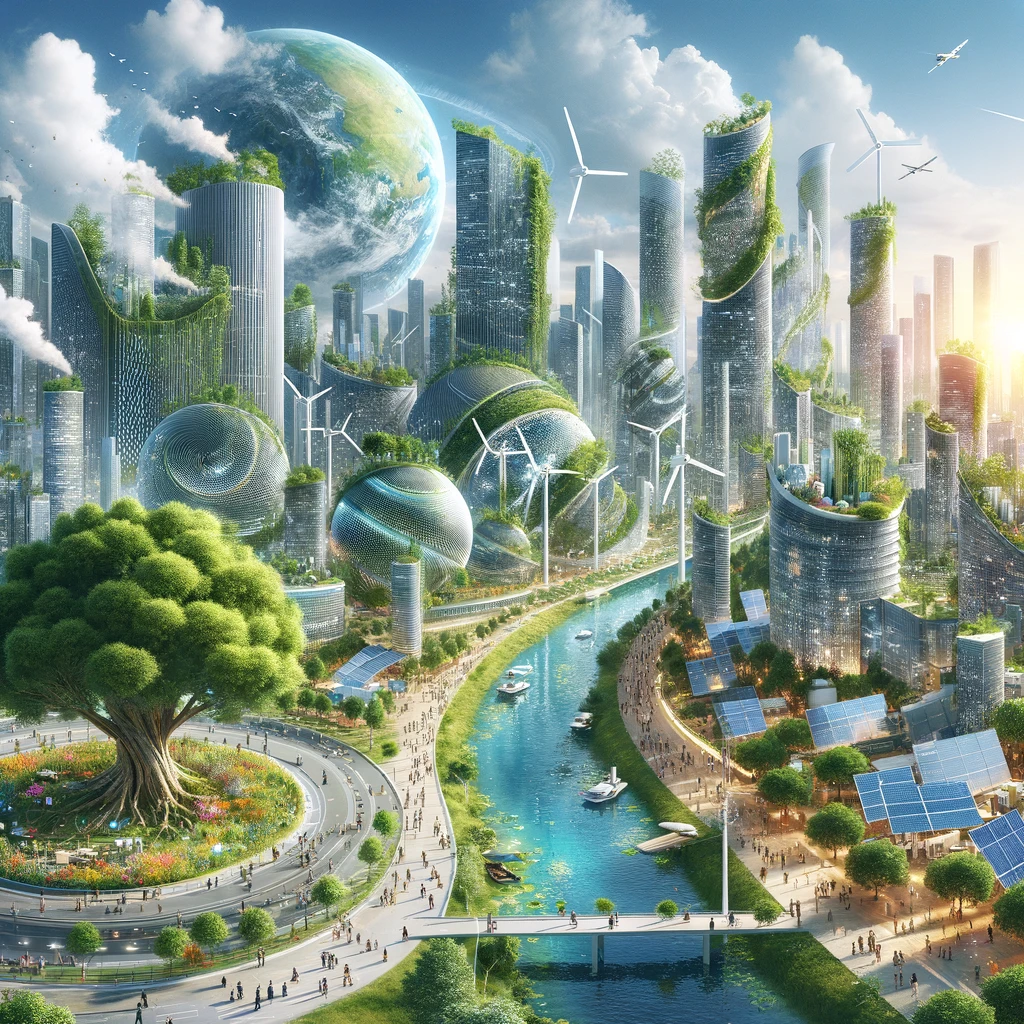
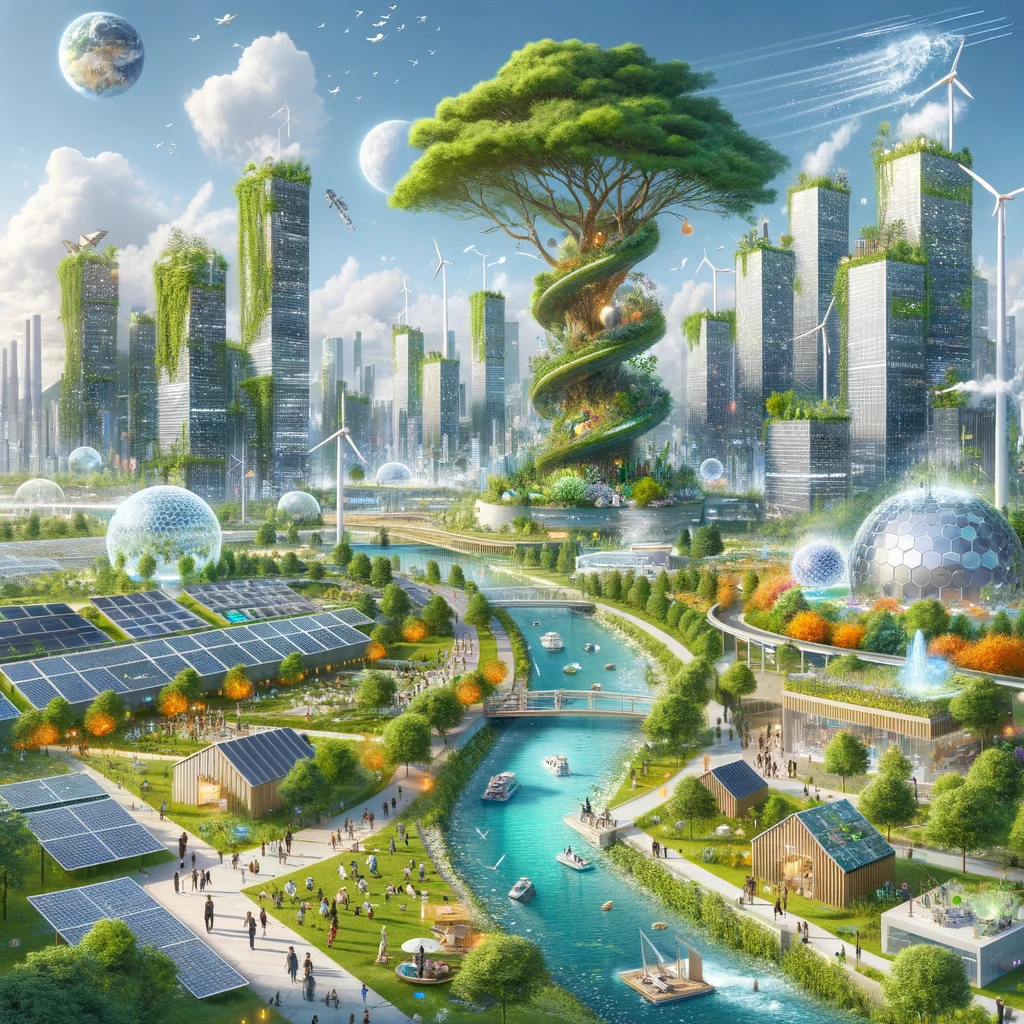
Chapter 22: The River of Life
- The River of Life flowing from the throne of God and of the Lamb signifies the continuous and abundant provision of resources when energy, technology, and community support education and development in an integrated, sustainable manner. The tree of life with its healing leaves represents the regenerative power of a society built on these principles.
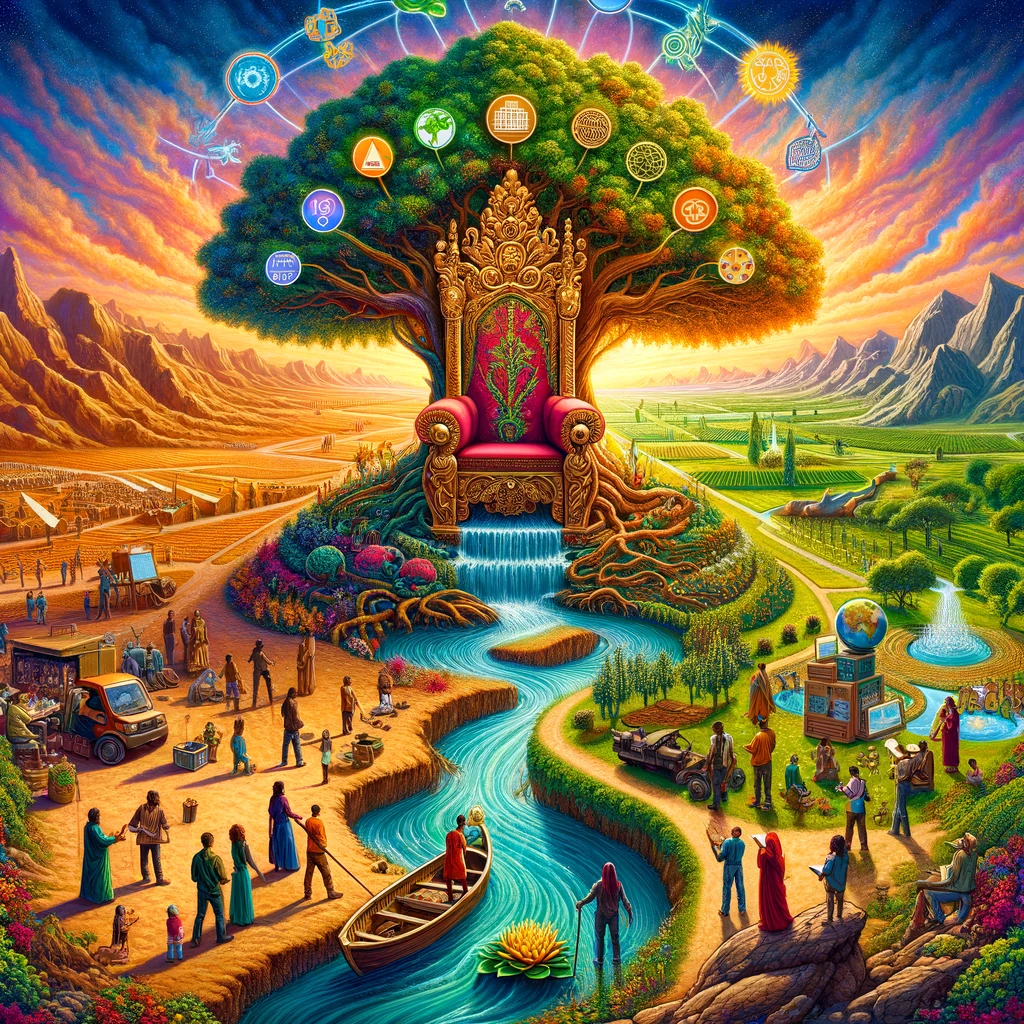
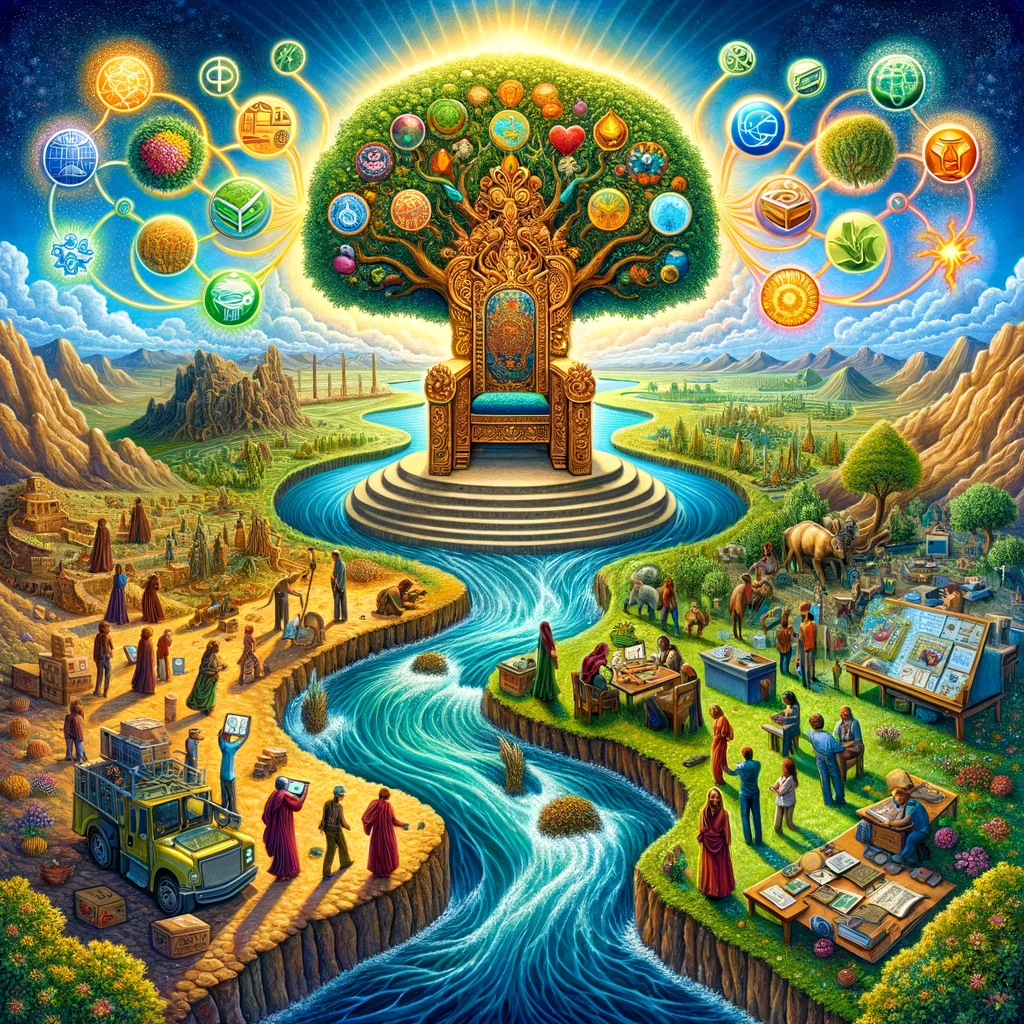
This concluding part of Revelation, reinterpreted through the lens of the Wealth Ecology Model, outlines a hopeful future that is attainable when human progress is aligned with the sustainable and equitable use of resources, encapsulating the Wealth Ecology Model’s ethos for an interdependent and prosperous global society.
